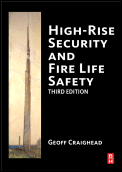Chicago Police Show Restraint, Get High Praise for NATO Protests

Although 90 people were arrested and eight officers were injured, the Chicago Police handled the weekend's NATO Summit protests with decided restraint and strategy, according to a report from the Associated Press.
“We got them trained and equipped, and they executed the plan on all levels,” said Superintendent Garry McCarthy, on the street Monday during a march outside Boeing Co. headquarters. “It hasn’t been that big of a deal, quite frankly. It’s almost like it was harder dealing with the hype than the event itself.”
McCarthy literally stood behind his troops, pointing and shouting orders during the worst clashes with protesters, AP reports. He said that Chicago’s performance dealing with the protests was a “how-to” for other cities. “And that is to be patient and tolerant,” he said.
From what can be assessed from the publicly available accounts, officers only used their batons in face-to-face confrontations with protesters pushing against police lines, what McCarthy called “assaults” against his officers, AP says.
The Chicago PD used their bicycles as a way to escort and corral protesters and as portable barricades.
They also employed intelligence gathering techniques long before the summit arrived in town, leading to the arrests of five men on terror-related charge, including three accused of making Molotov cocktails in a plot to attack various locations, days before the summit started.
The police force handled troublemakers in a very focused way, as officers were trained to “surgically extract” individuals who broke the law in a way that disrupted crowds as little as possible, AP reports. The force was instructed not to confront the entire crowd as they had done in the past.
On Sunday night, AP writes, “a few minutes after a full water bottle flew out of a crowd of protesters and into a phalanx of riot gear-clad officers in front of the Art Institute of Chicago, a team of five or six officers emerged, rushing across the street.
“In seconds, they had grabbed the man they thought was responsible, dragged him back across the street and through their own front line of officers that opened up long enough for them to get by before closing ranks again.”
There was some shouting from protesters, but many appeared to accept what they had seen, and some even joked to each other that the police had, in fact, captured the man who had thrown the bottle, AP says.
The officers had used an in-rank information network to inform the extraction team about the offending individual, passing along information on who they thought threw the bottle and what he was wearing.
AP states that the police may have had help in their intelligence gathering also, relying on what is “widely considered the most extensive surveillance system in the United States.” Inside the city’s emergency center, information collected from surveillance cameras at the sites of the protests was relayed back to the commanders on the street.
While officials at the Office of Emergency Management and Communications could not immediately say whether or not emergency workers at the center aided in that arrest of the water bottle thrower, but they did say they provided information that helped officers identify individuals in the throng who broke the law during Sunday’s protest.
A lack of communication, however, caused what AP calls “perhaps one of the most ominous scenes of the weekend:” when officers were seen slipping on their gas masks.
What started as chatter over the radio about one protester wearing a gas mask was interpreted as an order to prepare. McCarthy states that he never gave that order, and the officers were informed of such quickly.
University of Chicago law professor Craig Futterman has studied the department and its history of brutality, but said “I think they helped their reputation. Generally speaking, the CPD seemed to exercise an extraordinary amount of restraint.”
He also said that video shot by protesters, observers and the Police Department will eventually reveal where the CPD went wrong, but he added that there is no disputing that the police could have made a tense situation into something much worse. If they had used their billy clubs more aggressively, or used so-called sound cannons to create ear splitting noise or doused protesters with pepper spray, the department would have a dramatically different reputation after the weekend, AP reports.
“They had all that (at their disposal) and they didn’t go there,” Futterman said.
Looking for a reprint of this article?
From high-res PDFs to custom plaques, order your copy today!






